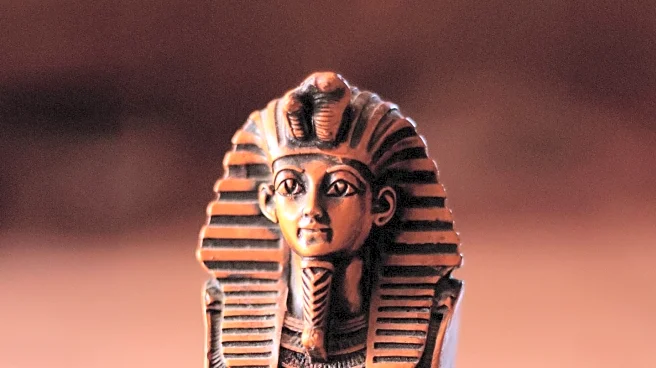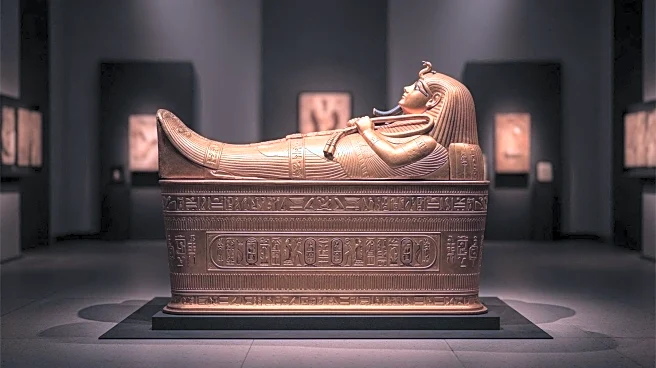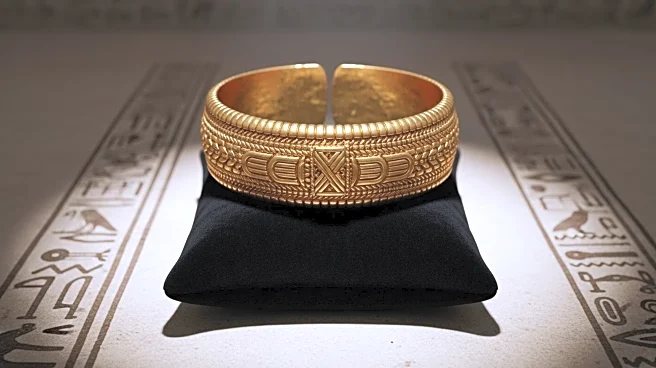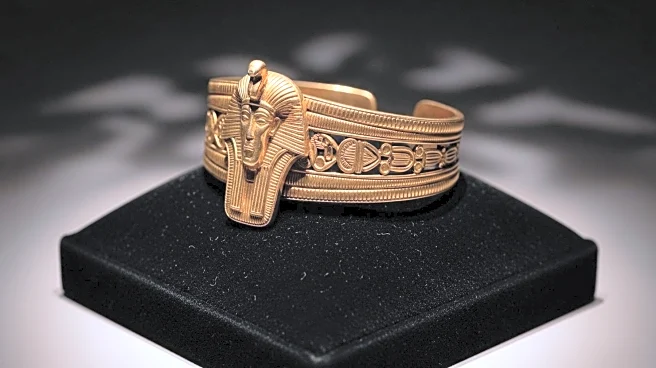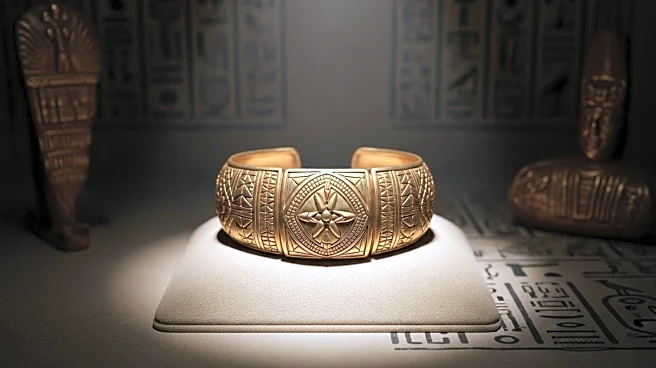What's Happening?
Egyptians have expressed outrage following the theft and subsequent destruction of a 3,000-year-old bracelet belonging to Pharaoh Amenemope from the Egyptian Museum in Cairo. The bracelet was stolen during preparations for an exhibit in Italy and was melted down for gold. Four suspects have been arrested, including a museum restoration specialist. The incident has sparked calls for improved security measures at museums housing Egypt's ancient treasures.
Why It's Important?
The theft of the ancient bracelet underscores vulnerabilities in the security of cultural heritage sites, raising concerns about the protection of Egypt's historical artifacts. This incident highlights the need for stringent security protocols to prevent similar losses, which could have significant cultural and economic impacts. The destruction of such a valuable artifact represents a loss not only to Egypt but to global heritage, emphasizing the importance of safeguarding historical treasures.
What's Next?
In response to the theft, there may be increased pressure on Egyptian authorities to enhance security measures at museums and cultural sites. This could involve the installation of surveillance systems and stricter access controls. Additionally, there might be a reevaluation of policies regarding international exhibits to ensure better protection of artifacts. The incident could also prompt international cooperation to recover stolen artifacts and prevent future thefts.
Beyond the Headlines
The theft and destruction of the bracelet highlight broader issues of cultural preservation and the challenges faced by countries in protecting their heritage. It raises ethical questions about the commercialization of historical artifacts and the responsibilities of museums in safeguarding their collections. This event may also influence public discourse on the importance of cultural heritage and the need for global efforts to protect it.

